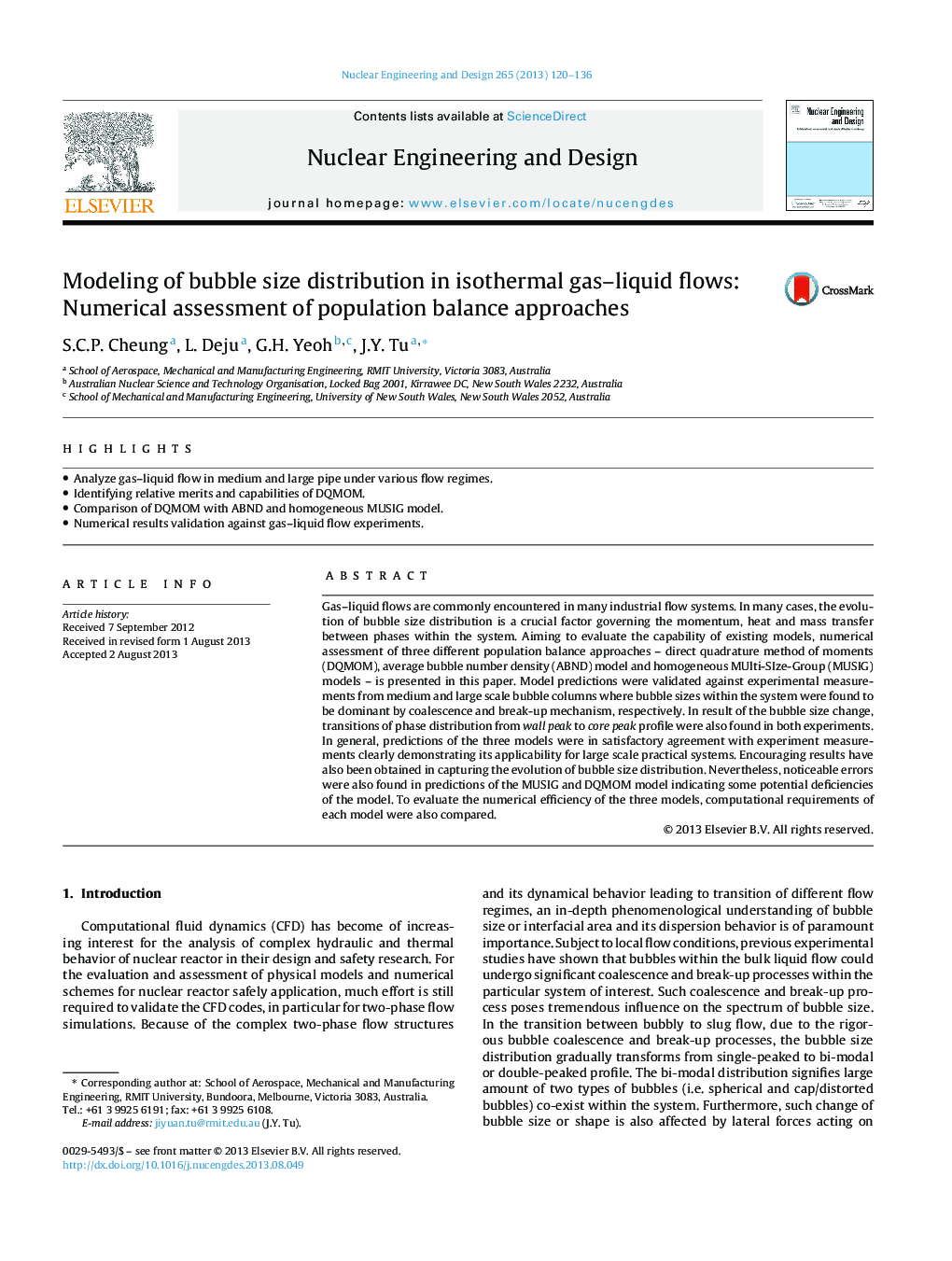| Article ID | Journal | Published Year | Pages | File Type |
|---|---|---|---|---|
| 6762773 | Nuclear Engineering and Design | 2013 | 17 Pages |
Abstract
Gas-liquid flows are commonly encountered in many industrial flow systems. In many cases, the evolution of bubble size distribution is a crucial factor governing the momentum, heat and mass transfer between phases within the system. Aiming to evaluate the capability of existing models, numerical assessment of three different population balance approaches - direct quadrature method of moments (DQMOM), average bubble number density (ABND) model and homogeneous MUlti-SIze-Group (MUSIG) models - is presented in this paper. Model predictions were validated against experimental measurements from medium and large scale bubble columns where bubble sizes within the system were found to be dominant by coalescence and break-up mechanism, respectively. In result of the bubble size change, transitions of phase distribution from wall peak to core peak profile were also found in both experiments. In general, predictions of the three models were in satisfactory agreement with experiment measurements clearly demonstrating its applicability for large scale practical systems. Encouraging results have also been obtained in capturing the evolution of bubble size distribution. Nevertheless, noticeable errors were also found in predictions of the MUSIG and DQMOM model indicating some potential deficiencies of the model. To evaluate the numerical efficiency of the three models, computational requirements of each model were also compared.
Related Topics
Physical Sciences and Engineering
Energy
Energy Engineering and Power Technology
Authors
S.C.P. Cheung, L. Deju, G.H. Yeoh, J.Y. Tu,
